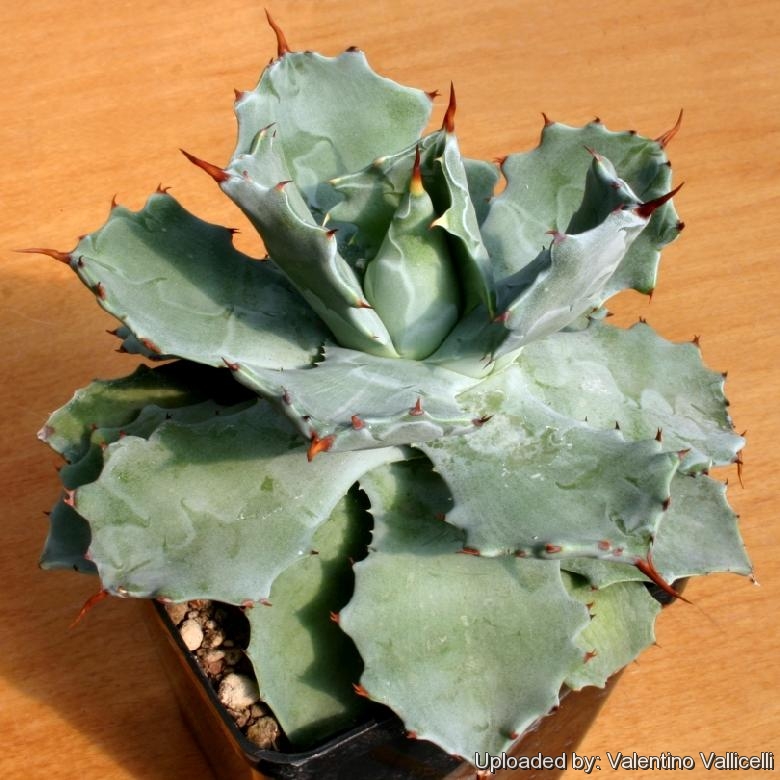
Agave verschaffeltii (A. potatorum)
This species is highly ornamental but quite variable in form. The leaves have distinct showy bud-imprints.
Origin and Habitat: Agave potatorumSN|540]]SN|540]] comes from Mexico, occurs from southern Pueblo state down to central Oaxaca and Chiapas, in semi-arid highlands between 1200 and 2200 m.
It is quite variable. The "verschaffeltii" form is commonly found in cultivation.
Synonyms:
See all synonyms of Agave potatorum
Common Names include:
JAPANESE (日本語): 王妃雷神, 雷神
Description: Description: A. potatorum "verschaffeltii" is a small Agave, growing solitary or slowly clumping, that forms an open symmetrical succulent rosette, up to 60 cm tall, 60 m in diameter. But the size of the plant from different population and the clones on the market are quite variable and may be anywhere between 10 and 90 cm in diameter when fully grown-up.
Leaves: Blue-grey to silvery-grey, broad, 25-40 cm long, slightly deflexed back near the tips that terminate in a distinctive, often twisted or slightly wavy, reddish, yellowish or dark brown spine up to 2,5 long. Typical of the form vershaffeltii are the short marginal spines on pronounced tubercle-like prominences. The leaves also have distinct showy bud-imprints.
Flowers: Long spikes that rise up to 3 to 5 m bearing light green flowers tinged with red and subtended with red bracts.
Notes: Agave potatorumSN|540]]SN|540]] is included in the group Hiemiflorae. As a general rule, plants in this group have relatively short lateral branches on the inflorescence and tight ball-like clusters of flowers. They typically are winter-flowering, although Agave potatorumSN|540]]SN|540]] is a little earlier than most, with a September-to-December peak flowering time.
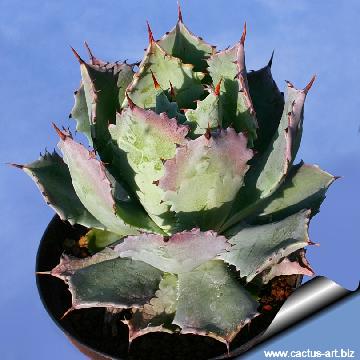 Agave potatorum var. verschaffeltii Photo by: Cactus Art
Agave potatorum var. verschaffeltii Photo by: Cactus Art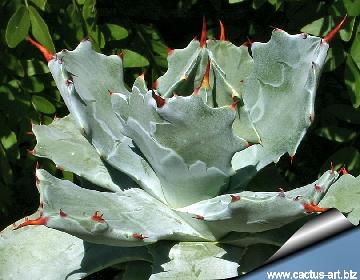 Plant with sinuous leaf margins and teeth atop of outward-projecting bumps are often called by the old name of A. verschaffeltii Photo by: Cactus Art
Plant with sinuous leaf margins and teeth atop of outward-projecting bumps are often called by the old name of A. verschaffeltii Photo by: Cactus Art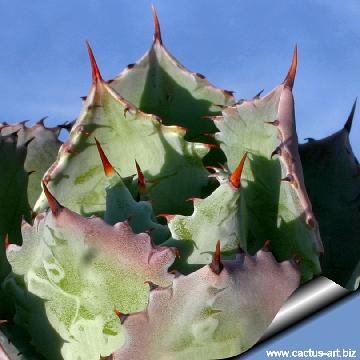 Agave potatorum var. verschaffeltii Photo by: Cactus Art
Agave potatorum var. verschaffeltii Photo by: Cactus Art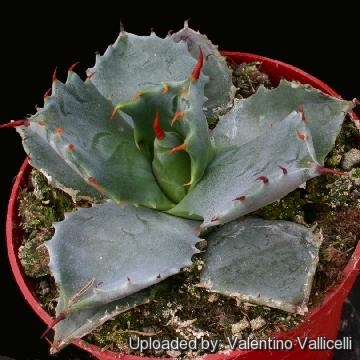 Agave potatorum var. verschaffeltii Photo by: Valentino Vallicelli
Agave potatorum var. verschaffeltii Photo by: Valentino Vallicelli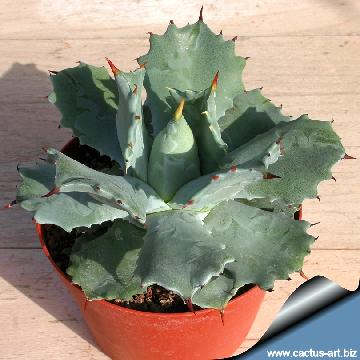 Agave potatorum var. verschaffeltii Photo by: Cactus Art
Agave potatorum var. verschaffeltii Photo by: Cactus Art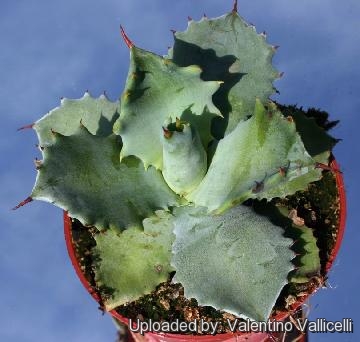 Agave potatorum var. verschaffeltii Photo by: Valentino Vallicelli
Agave potatorum var. verschaffeltii Photo by: Valentino VallicelliCultivation and Propagation: Agave verschaffeltii (potatorum) is a relatively easy-to-grow species, though not as cold-hardy as many of the more northerly-occurring species (Winter hardy to around -3° C degrees). Suited for light shade to full sun, but better with some shade in summer. It needs a very well-drained, soil. It grows fairly fast in summer if provided with copious water, but allow to dry thoroughly before watering again (the more water and fertilizer this plant gets, the faster it will grow). During the winter months, one should only water enough to keep the leaves from shrivelling.
It does great in containers or in the ground. Plants cultivated outdoors are more drought tolerant and can take some heat and full sun. Remove eventual suckers to show the beauty and form of the individual rosette.
Propagation: By seeds or by suckers that are found growing around the base of the plant, however this species rarely offsets many plants after maturing,. This begins to occur when they are as young as 10 years old. They will flower (usually during the autumn) and the entire plant declines and dies. But many of the clones actually in cultivation are more prolific, and suckers are readily available. The basal suckers can be removed in spring or summer, letting the cuttings dry for a few days before inserting in compost.
















